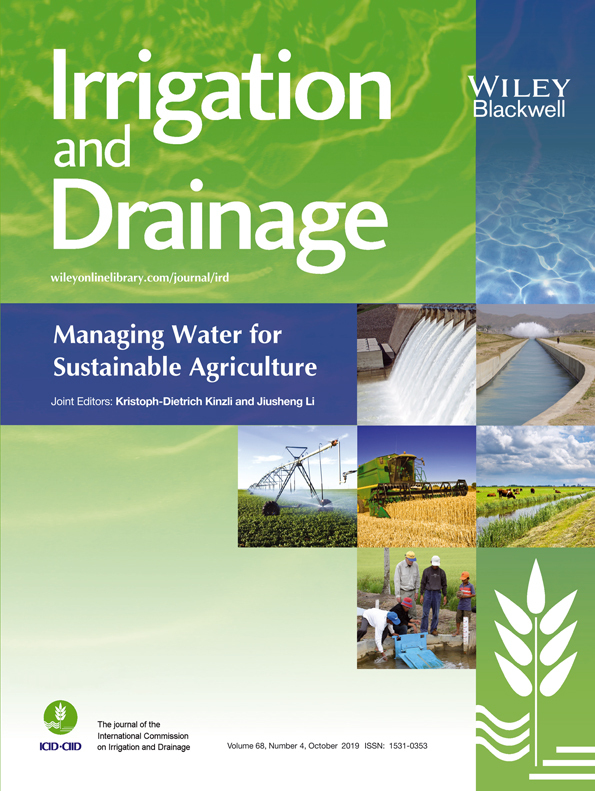Effect of Initial Soil Water Content on Output Parameters of Sirmod Software Under Types of Different Irrigation Management†
Abstract
enThe main objective of this study was to investigate the sensitivity of the output parameters of SIRMOD software relative to initial soil water content. The treatments consisted of three irrigation water qualities, two types of soil water content management (FC and 30% FC; FC is field capacity) and three irrigation events. The HYDRUS-1D software was calibrated to simulate infiltration under different initial soil water contents. Subsequently, the infiltration coefficients obtained from the HYDRUS model were used to simulate the border irrigation system under the different border lengths and inflow rates using the SIRMOD software. The results showed that soil was more permeable under FC management than under 30% FC. The sensitivity of the output parameters of the SIRMOD software under FC was more sensitive compared to 30% FC. The high- and low-sensitive treatments were in the FC and 30% FC management with high saline-sodic water, respectively. Due to the high permeability under FC, in order to increase the irrigation application efficiency and reduce its sensitivity, the inflow rate should be greater while border length has to be less, compared to 30% FC. Sensitivity analysis of the output parameters showed that the advance time and tailwater fraction were identified as the most and least sensitive parameters, respectively. © 2019 John Wiley & Sons, Ltd.
Résumé
frL'objectif principal de cette étude était d'étudier la sensibilité des paramètres de sortie du logiciel SIRMOD par rapport à la teneur initiale en eau du sol. Les traitements consistaient en trois qualités d'eau d'irrigation, deux systèmes de gestion de la teneur en eau du sol (FC et 30% FC; FC correspond à la capacité sur le terrain) et trois événements d'irrigation. Le logiciel HYDRUS-1D a été étalonné pour simuler l'infiltration sous différentes teneurs initiales en eau du sol. Par la suite, les coefficients d'infiltration obtenus à l'aide du modèle HYDRUS ont été utilisés pour simuler le système d'irrigation par casiers sous différentes longueurs de bordure et taux d'afflux à l'aide du logiciel SIRMOD. Les résultats ont montré que le sol était plus perméable sous la gestion du FC que sous le FC à 30%. La sensibilité des paramètres de sortie du logiciel SIRMOD sous FC était plus sensible comparée à 30% de FC. Les traitements hautement et faiblement sensibles appartenaient respectivement aux directions FC et 30% FC avec d'eau très saline-sodique. En raison de la haute perméabilité sous le FC, afin d'accroître l'efficacité de l'application de l'irrigation et de réduire sa sensibilité, le taux d'entrée devrait être supérieur, tandis que la longueur de la bordure doit être inférieure à celle du FC à 30%. L'analyse de sensibilité des paramètres de sortie a montré que le temps d'avance et la fraction de l'eau résiduaire étaient respectivement identifiés comme les paramètres les plus sensibles et les moins sensibles. © 2019 John Wiley & Sons, Ltd.




